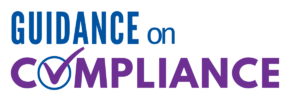According to the Centers for Medicare & Medicaid Services (CMS), the transition to the Patient Driven Payment Model (PDPM) relates to reimbursement only. Clinical care delivery is expected to remain the same.
Although there has been a multitude of new information related to calculating the Health Insurance Prospective Payment System (HIPPS) code, which supports reimbursement, there have not been any changes to the Medicare Benefit Policy Manual (MBPM) Chapter 8: Coverage of Extended Care (SNF) Services Under Hospital Insurance at this time, except for language regarding an interrupted stay. Chapter 8 provides the regulatory foundation of requirements to support care delivery that is billed under Medicare Part A Fee-for-Service reimbursement.
Since the inception of PDPM in October of 2019, LW Consulting, Inc. (LWCI) has been busy supporting clients with PDPM analysis. Focus areas include: MDS coding accuracy audits, training, monitoring of trends, and assisting with improving operational systems to meet the reimbursement requirements. LWCI supports facilities to capture accurate MDS coding per the new requirements in the Resident Assessment Instrument (RAI) Manual.
Now into the fifth month of coding PDPM, CMS and the Medicare Administrative Contractors (MACs) have (to date), been silent on audits, reviews or changes to any newly implemented PDPM rules. Prior to the initiation of PDPM, CMS clearly stated that the expectation for therapy intensity, mode of delivery and clinical care would not change under PDPM because the new model was a reimbursement change only.
In recent review of auditing MDS coding accuracy, LWCI has identified some concerns, related to clinical care delivery and documentation that warrants increased focus. Some of these includes:
- If therapy is going to “count” as a skilled reason for Medicare Part A coverage, it must be delivered 5 days per week.
- Nursing documentation should demonstrate one or more of the following to support reasonable and necessary skilled care:
- Management and Evaluation of the Care Plan
- Assessment and Observation
- Education and Training
Under the Resource Utilization Group (RUG) IV Prospective Payment System (PPS), therapy was the reason for skilled care needs, which supported the MBPM Chapter 8 requirements in all patients who received a Rehab RUG. The nurses were accustomed to documenting under reason for skilled care: therapy. There was no need to add additional information under RUG IV PPS for a patient reimbursed for rehab. The criteria were met. The therapy minutes were monitored closely due to the reporting requirements for the unscheduled Other Medicare Required Assessments (OMRA), Change of Therapy (COT) and the need to maintain the required minutes in order to continue to receive the reimbursement. There was no question as to whether the skilled requirements for five days were being met as this was discussed as a focus during the daily PPS meeting.
Now, under PDPM, even though CMS has stated that there should not be changes in therapy delivery, there in fact have been noted changes in therapy delivery. If orders are obtained for therapy for 5 days per week, five days of that discipline should be delivered. If a session is not completed, the reason why it was not provided needs to be documented. The reasoning must be related to the clinical needs of the patient, and not related to a scheduling conflict of the therapist. If the minimum requirement for therapy provision is less than five days per week, the therapy component will not meet the MBPM Chapter 8 requirements for skilled care. The burden of proof for skilled care will fall solely to the nursing documentation.
The MDS Coordinator and the interdisciplinary team should be aware of whether or not therapy is providing appropriate skilled care. If the combination of more than one therapy discipline meets the criteria for five skilled days, the CMS requirements would still be met. The facility should be cognizant if the therapy plan of care is being followed, and if the reduction in frequency is related to clinical needs of the patient or if it appears to be based on therapist availability or scheduling. If skilled therapy is missed occasionally, and is not a pattern, the requirements would probably be met. However, it is an area to closely monitor.
The nursing documentation should always paint the picture of the nursing skills that are being implemented based on the clinical diagnoses and conditions of the patient. Whether the nurses are using pre-formatted check-box documentation forms, or narrative notes, the skilled reasoning must be clarified for anyone reviewing the documentation. Focus areas that could be potential risks should be highlighted. For example, a patient with a primary diagnosis of a total hip replacement has a surgical wound. The status of the wound should be identified to demonstrate that there is no infection. This would include notation that the wound is not red, warm or open. The patient’s temperature and status for medications to assist with normal healing might also be documented. The nurse should summarize that there are no signs of infection and the wound is healing. This demonstrates evaluation and management of the skilled nurse. If the nurse merely checks on the wound and does not document, the necessary skills would not be demonstrated.
Here are some important follow up recommendations:
- Take time to review the MBPM Chapter 8 §30.2-30.6 on the requirements for skilled care necessary to bill under Medicare Part A Fee-for-Service. https://www.cms.gov/Regulations-and-idance/Guidance/Manuals/Downloads/bp102c08pdf.pdf
- Review facility systems, including meetings and/or reports, to monitor frequency and intensity of therapy provision.
- Perform a review of skilled nursing documentation to see if it meets the criteria in MBPM Chapter 8 and supports the skilled care of patients (in the absence of therapy). This is very important if care delivery is going to extend after therapy has discharged a patient or if therapy is not providing skilled coverage.

